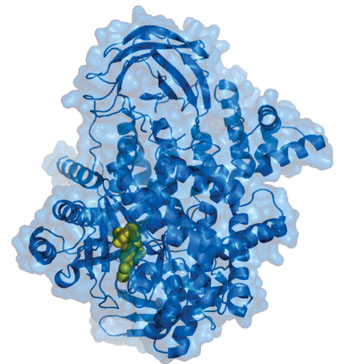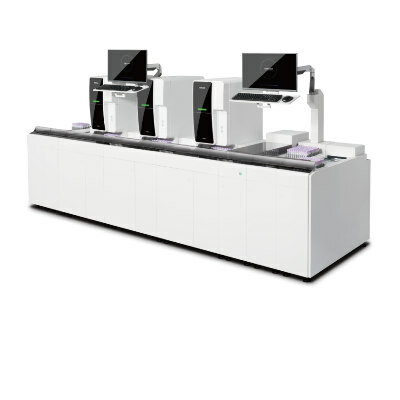Mutation Identified That Predicts Response of Breast Cancer to Treatment with Drug Duo
By LabMedica International staff writers
Posted on 18 Aug 2015
A gene mutation was identified as a biomarker that can predict whether a patient with HER-2 positive breast cancer will respond positively to the most effective dual anti-HER2 treatment.Posted on 18 Aug 2015
Recent evidence has shown that the PIK3CA (phosphatidylinositol-4,5-bisphosphate 3-kinase, catalytic subunit alpha) gene was mutated in a range of human cancers. It has been found to be oncogenic and has been implicated in cervical cancers.

Image: Molecular model of phosphatidylinositol-4,5-bisphosphate 3-kinase, catalytic subunit alpha (PIK3CA) (Photo courtesy of Wikimedia Commons).
The phase II CHER-LOB (Chemotherapy, Herceptin, and Lapatinib in Operable Breast Cancer) study found in 2012 that the combination of trastuzumab plus lapatinib, added to neoadjuvant chemotherapy, was more effective than either agent alone. The CHER-LOB study was a noncomparative, randomized, phase II trial of preoperative taxane-anthracycline in combination with trastuzumab, lapatinib, or combined trastuzumab plus lapatinib in patients with human epidermal growth factor receptor 2 (HER2)-positive, stage II to IIIA operable breast cancer.
In a follow-up to the CHER-LOB study, investigators at Istituto Oncologico Veneto IRCCS (Padua, Italy) sought to identify biomarkers that would indicate which patients would benefit most (or least) from treatment with the trastuzumab plus lapatinib combination of chemotherapeutic drugs.
To this end they carried out genomic analyses on fresh-frozen tissue samples from 121 breast cancer patients positive for human epidermal growth factor 2 (HER2) who had been treated randomly with neoadjuvant chemotherapy plus trastuzumab, lapatinib, or both trastuzumab and lapatinib. Pre- and post-treatment samples were centrally evaluated for HER2, p95-HER2, phosphorylated AKT (pAKT), phosphatase and tensin homolog, Ki67, apoptosis, and PIK3CA mutations.
Results published in the August 5, 2015, online edition of the journal the Oncologist revealed that only 12.5% of patients with mutated PIK3CA responded to treatment with trastuzumab plus lapatinib, while the response rate to dual anti-HER2 therapy was four-times higher among patients with normal PIK3CA (48.4%). Thus, PIK3CA mutation could be a potential predictive marker of resistance to dual anti-HER2 treatment that should be further studied in breast cancer.
“We are seeing more and more anti-HER2 treatments becoming available to treat patients with HER2-positive breast cancer,” said senior author Dr. Pierfranco Conte, professor of medicine at Istituto Oncologico Veneto IRCCS. “By identifying new markers that help us to predict which patients are more sensitive to which anti-HER2 treatments, we are moving closer to treatment personalization.”
Related Links:
Istituto Oncologico Veneto IRCCS













